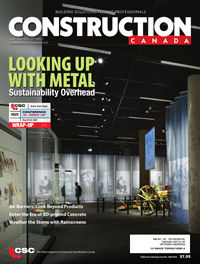Essential knowledge for consistent fenestration specification
In the world of fenestration, there is a wide variety of different products with a common purpose: to close the building envelope, allow light into the interior, and offer outside views. Fixed and operable windows, curtain wall, storefront, window wall, skylights, sliding doors, and hinged entrances are among the most familiar systems. Products must be evaluated to meet each project’s unique requirements and goals.
To ensure proper specification, it is essential to understand fenestration products are listed across multiple MasterFormat Divisions, and subject to different standards and code requirements.
Fenestration types are grouped into two broad product categories:
- Windows – The first category includes product types defined under the scope of AAMA/WDMA/CSA 101/1.S.2/A440 North American Fenestration Standard (NAFS), Specification for windows, doors, and skylights. NAFS has been referenced by the National Building Code of Canada (NBC) since its 2010 edition. The CAN/CSA Standard, A440-00/A440.1-00 (A3-B7-C5), is no longer recognized by the NBC and shall not be used in specifications (refer to Sidebar 2, page 2).
- Other Fenestration Assemblies – The second category includes curtain wall, storefront, and window wall, called “Other Fenestration Assemblies” as defined in the appendix of the current NBC 2020. These products are not covered by a specific testing protocol referenced in NBC 2020, but must achieve the performance minimums indicated for structure, water management, and air leakage.
Categorization and the relevant specifications become complicated when multiple fenestration products are selected for a single project, for example, when a NAFS scope window type is integrated into an “Other Fenestration Assemblies” product type, as defined in the NBC 2020 appendix. The specifications professional then must navigate a path through building and energy codes requirements, specific project needs, compliance with different standards and consistency between divisions, and expected quality and esthetics.
What is in the code?

Canada’s 2020 National Model Codes are currently in effect. Code updates are now the responsibility of the newly formed Canadian Board for Harmonized Construction Codes (CBHCC). Proposed changes to the 2020 editions will be open for public review. If approved, code changes will be included in the 2025 editions of the National Model Codes, published by the National Research Council of Canada (NRC).
As per NBC 2020, Section 5.9.2. states that products listed in the scope of NAFS need to comply with both NAFS-17 and the CSA A440S1-19 Canadian Supplement to NAFS (refer to Sidebar 1 below) NAFS and the Canadian Supplement define the performance level and the process to determine it, the pass/fail criteria and tests protocols for structural considerations, and the air and water management.






